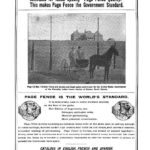Though insane asylums were not common institutions anywhere, citizens in most locales were delighted to have them situated nearby. Asylums meant jobs, payrolls that workers might spend in town, and an ongoing need for supplies that local merchants could try to meet.
Canton, South Dakota’s citizens were no exception to this general feeling that an insane asylum would be a good thing for their area. They had further hopes that the special mission of this particular asylum (treating Indians exclusively) would make Canton a magnet for visitors and researchers. As the asylum gained recognition and prestige, they hoped Canton itself would become a more-visited spot.
Their optimism was not unwarranted. The New York Times wrote an article about the asylum in 1901, as did other out-of-state papers. What was really exciting, though, was the trend that the new construction seemed to promise. At the same time the asylum was being built, an August, 1901 newspaper story told about a new “Chautauqua pavilion down in a grove by the river [that] will seat 5,000 people” and that “plans have just been drawn for O. A. Rudolph for a new hotel which will cost $25,000.” The pavilion and the hotel would then be offered as “inducements for the location of state conventions and other large gatherings.”
Anything that made the small city appear more attractive and cosmopolitan was desirable, and it is no wonder that few people gave any thought to the inadequacies that existed in actually making the new insane asylum a success.








